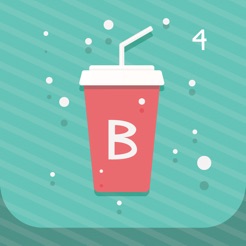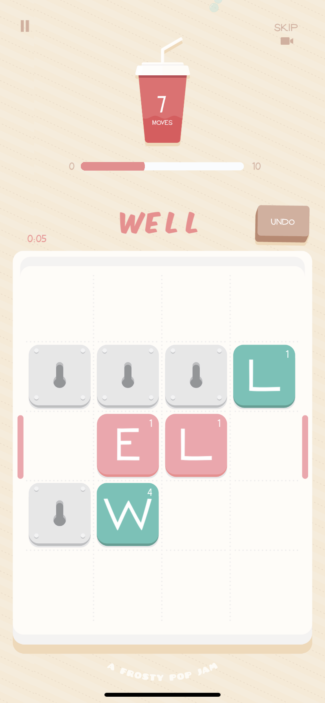Bastion
LQ: 9.15
Recommended Age: 10+
Skills Used: Planning, Working Memory, Mathematics, Reading

Letters & Sodas is a puzzle game with a Scrabble influence. The player is given a target word and a set of letter tiles. The letter tiles will include more letters than what is needed for the target word. They are also scrambled up. The player has a limited number of moves to get the tiles to match the target word.
Each level has several words the player must match before they can complete the level and unlock the next one. There are also leaderboards and a zen mode (under settings). Letters & Sodas has ads and in-app purchases. The ESRB rated it E for Everyone and LW4K stands by this rating. It is important to note, however, that this game requires letter recognition (at the least) in order to play. A child who cannot match their tiles to the target tiles will be unable to play this game. In most cases, the player will need to be at least 7 or 8 to successfully play this game.
Letters & Sodas helps kids practice and improve the following skills:
 Organization
OrganizationArranging and coordinating materials in order to complete a task.
The further the player gets into this game, the more difficult the game gets. There are locked tiles and more “extra” tiles. As this gets steadily harder, the player will have to use more and more of their organization thinking skills. They must be able to see not only where the tiles are supposed to go, but the (often) multiple ways that they can be moved there. Then the player has to organize these options in their head to make sure the pick one that can be done in the fewest number of moves. If they don’t keep their ideas organized in this manner, they will run out of moves and have to redo the word. This will also keep them from unlocking new levels.
Developing a systematic approach for setting and achieving goals.
Each word offers a new problem to solve. What order should the tiles be moved in? How can the player get them around locked tiles? Are there enough moves to follow the most obvious path? All of these questions must be thought about and the player must make a plan that answers them all. If they aren’t taking care to make a short plan (or longer plans in higher levels), then they won’t be able to form the words and beat the levels.
All membership plans come with full access to our entire suite of tools learning guides, and resources. Here are a few of the ones we think you’ll like the most: